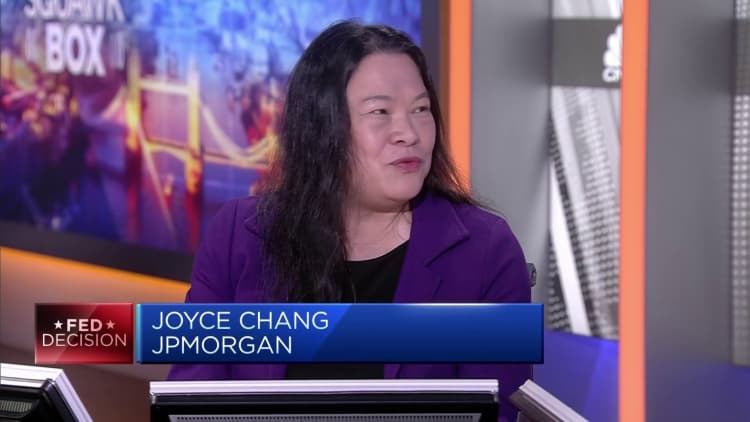Immigration is boosting the U.S. economy and has been ‘underestimated’

U.S. commuters.
Caroline Purser | The Image Bank | Getty Images
The recent influx of immigration into the U.S. is helping to bolster the economy despite a raft of global challenges, according to Joyce Chang, chair of global research at JPMorgan.
The U.S. Federal Reserve on Wednesday raised its U.S. GDP growth projection to 2.1% for 2024, up from 1.4% in its December outlook, as the economy continues to display resilience despite high interest rates as the central bank seeks to manage inflation levels.
Meanwhile, the labor market has remained relatively hot despite tighter monetary conditions, with unemployment remaining below 4% in February and the economy adding 275,000 jobs.
The Fed also raised its projections for its preferred measure of inflation: core personal consumption expenditure. It now expects the core PCE to come in at 2.6%, up from 2.4%, after January and February inflation prints dampened hopes that price increases were fully under control.
The core consumer price index, which excludes volatile food and energy prices, rose 0.4% in February on the month and was up 3.8% on the year, slightly higher than forecast.
“We are still seeing the phenomena around the globe that services inflation is still well above where it was before the pandemic, so we’re looking at 3% for core CPI, but I think one thing that was really underestimated in the U.S. was the immigration story,” Chang told CNBC’s “Squawk Box Europe” on Thursday.
“The U.S. population is almost 6 million higher than it was two years ago or so, and so that has accounted for a lot of the increase in consumption, when you see the very low unemployment numbers as well.”

She noted that upward pressure on wages and housing costs, along with a resurgence in energy prices so far this year, suggest that the Fed is “not out of the woods yet” when it comes to inflation.
A recent Congressional Budget Office report estimated that net immigration to the U.S. was 3.3 million in 2023 and is projected to remain at that level in 2024, before dropping to 2.6 million in 2025 and 1.8 million in 2026.
Immigration, and particularly border crossings, is among the hottest topics in the run-up to the November presidential election. Chang suggested that other events could exacerbate the issue, particularly the unfolding situation in Haiti.
However, she argued that in terms of net impact on the economy, immigration is “a good thing.”
“From everything that we have seen, the revenues that are generated exceed the expenses. Now it is a political issue, not just here in the U.S. but you look at Europe, it’s also probably the number one issue right now, but we do think that when you look at the unemployment numbers, the strength of consumption, the immigration was a big part of that,” Chang said.

Other factors that have enabled the U.S. economy to outperform its peers include its high fiscal deficit and its energy independence, Chang added. Europe has struggled in recent years to eradicate its reliance on Russia for energy supply.
Meanwhile, the Congressional Budget Office projects that the U.S. federal budget deficit totaled $1.4 trillion in 2023, or 5.3% of GDP, which will swell to 6.1% of GDP in 2024 and 2025.
“I think that also in an election year you’re going to see a lot of spending before September 30th as well, so there aren’t really many signs that those numbers [will subside]. I think that’s one reason why I do think that higher for longer will be here to stay,” Chang added.
With this in mind, JPMorgan sees only a “shallow” loosening cycle from the Federal Reserve, with inflationary pressures set to persist against the backdrop of high government spending and immigration.
Read the original article here





